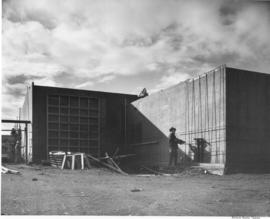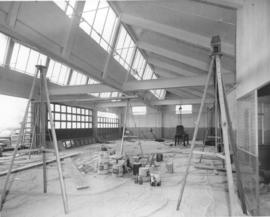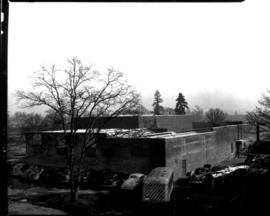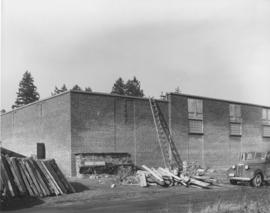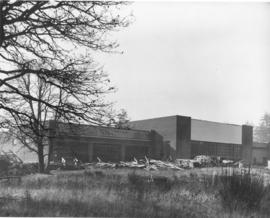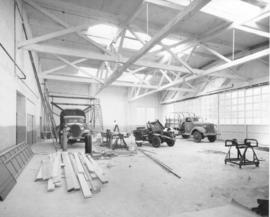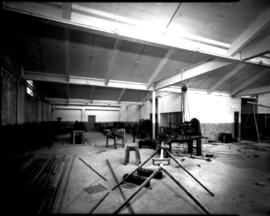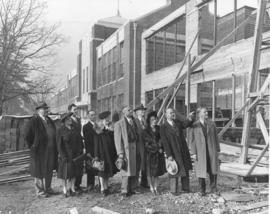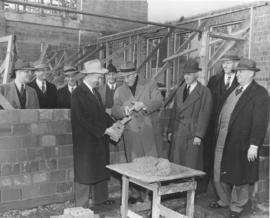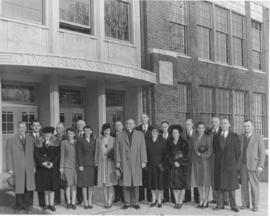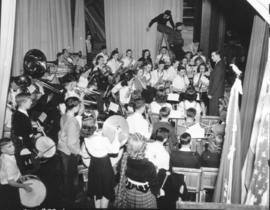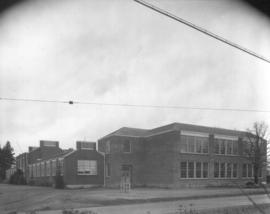- Item
- 1952-10-31
Part of Richards Studio Photographs
Construction of the new Clover Park Junior High School has begun and plywood forms for the reinforced-concrete are being installed. According to Clover Park superintendent A.G. Hudtloff the structure would house 20 classrooms, two home-making rooms, two science rooms, a band room, a choral room, general shop, art room, library, two teachers' rooms, a cafeteria, a conference room, kitchen and gymnasium. Capacity of the building would be 900 students. The building was estimated to cost $848,000.The building was designed by Charles Reuger. Standard Construction Company was the building contractor. (TNT, 9/l27/1952, p.10)
Public schools--Lakewood; Clover Park Junior High School (Lakewood); Reinforced concrete construction--Lakewood;
